 Image search results - "road" Image search results - "road" |

On Bandai-bashi Bridge
|
|

Bandai-bashi Bridge. The tall building is Toki Messe.
|
|
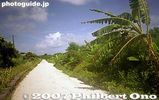
White coral road
|
|
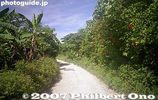
White coral road, one of Taketomi's trademarks.
|
|

View of Chuo-dori road from Otaru Station. Walk down this road to reach Otaru Canal.
|
|

Chuo-dori road looking toward Otaru Station
|
|

JR Kunitachi Station is neat during cherry blossom season. Even before you go out, you are captured by the view of cherry blossoms.
|
|

JR Kunitachi Station
|
|

Outside JR Kunitachi Station, south exit.
|
|

From the train station, the cherry trees lead you to Daigaku-dori road.
|
|

One of the prettiest train station rotaries in Tokyo.
|
|

Between JR Kunitachi Station (Chuo Line) and Yaho Station (JR Nanbu Line) is this straight road called Daigaku-dori (University Avenue) famous for cherry blossoms.
|
|

There are about 190 cherry trees along this road.
|
|
|

The cars and buses are irritating, but not dangerous since there is a sidewalk for us.
|
|

Bus for Kunitachi Station.
|
|
|
|

But I was walking on the bicycle path, and the pedestrian sidewalk was more outward.
|
|

Finally a shot with almost no cars.
|
|
|

Looking toward Kunitachi Station.
|
|
|

Hanami flower-viewing picnics under these trees are prohibited.
|
|

Along the way, you will pass by the famous Hitotsubashi University. This road was thus named "University Avenue."
|
|
|
|

About halfway, there's this pedestrian overpass, pretty crowded with people.
|
|

Going up the pedestrian overpass.
|
|
|
|
|

The pedestrian overpass gives you an up-close look at the flowers.
|
|
|
|

View of Daigaku-dori (looking toward Kunitachi Station) from the pedestrian overpass.
|
|
|

Looking toward Kunitachi Station.
|
|

Opposite side, looking toward Yabo Station.
|
|
|
|

Hanami picnickers breaking the rules.
|
|

Cherry tree near Kunitachi High School.
|
|

Bus stop near Kunitachi High School. The kanji characters for "Kunitachi" can also be read as "Kokuritsu" which means "national" (as in national museum). It can cause confusion for people who don't know. They might think
|
|
|
|

Daigaku-dori intersects with another cherry tree-lined road called Sakura-dori. Turn right into this road and you will reach a large park.
|
|

At this large park called Yaho Daisan Koen (谷保第三公園) on Sakura-dori, they hold the Kunitachi Sakura Festival during the weekend in early April.
|
|

The Kunitachi Sakura Festival features food booths and knick-knacks.
|
|

Entertainment stage too.
|
|
|
|

Unique local product, sweet potato baked in ceramic flasks. Called tsubo-yaki imo.
|
|
|
|

Inside the ceramic flask they bake sweet potatos.
|
|

Fire truck gave rides on its ladder.
|
|

Yaho Station. 谷保駅
|
|

Echigawa-juku was the sixty-sixth station or post town (shukuba) of the sixty-nine stations on the Nakasendo Road. It is the sixth Nakasendo station in Shiga (following Takamiya-juku in Hikone), and one of ten Nakasendo stations in Shiga.In front of Echigawa Station, a sign point the way to Echigawa-juku (go right).
|
|

Entrance to Echigawa-juku at the northern end. Echigawa-juku was the sixty-sixth station or post town (shukuba) of the sixty-nine stations on the Nakasendo Road. Map
|
|

This is a high-class ryotei restaurant called Omi Shonin-tei (近江商人亭). Built in the 1920s, it used to be an Omi Merchant's second home who sold hemp cloth.This is also one location where the film Idai Naru, Shurararabon (偉大なる、しゅららぼん The Great Shu Ra Ra Boom) was filmed. The Natsume family's dojo scene.
|
|

Nakasendo in Echigawa-juku
|
|

Large intersection has an Echigawa-juku monument.
|
|

The street corner has a pocket park for an Echigawa-juku monument showing an ukiyoe print of the town. A stone marker also points the way to Takamiya-juku.
|
|

The ukiyoe print by Hiroshige shows a bridge across Echigawa River. It was toll-free (Muchin-bashi).
|
|

Meiji Period-style mail box. It's a real mail box so you can deposit your mail here.
|
|

Pocket park in Echigawa-juku.
|
|

Heading south on the Nakasendo in Echigawa-juku.
|
|

Traditional-style building
|
|

Marker indicating that St. Shinran, founder of the Jodo Shinshu Buddhist Sect, once stayed at this temple.
|
|

Way to Homanji temple where St. Shinran once stayed.
|
|

Gate to Homanji temple.
|
|

Homanji temple Hondo hall in Echigawa-juku, Shiga. 宝満寺
|
|

Statue of St. Shinran (1173-1263) in front of the plum tree which he planted. The temple also has a scroll written by Shinran.
|
|

While traveling, St. Shinran was unable to cross the Echigawa River since there was a flood. So he stayed at this temple temporarily. During that time, he planted a plum tree which bloom red plum blossoms.
|
|

St. Shinran statue and plum tree.
|
|

The plum tree blooms in March.
|
|
|

Homanji Hondo
|
|

Inside Homanji Hondo main hall in Echigawa-juku, Shiga Prefecture
|
|

View from Hondo hall.
|
|

Some modern buildings along the Nakasendo in Echigawa-juku
|
|

Looks like a former bank building.
|
|

Hachiman Jinja Shrine in Echigawa-juku, Shiga
|
|

Way to Hachiman Shrine.
|
|

Hachiman Jinja Shrine, Echigawa-juku
|
|

The shrine has ties to Prince Shotoku Taishi who hid here from an enemy during a war. In appreciation, he donated rice paddies to the shrine.
|
|

Hachiman Jinja Shrine Honden main hall is a Shiga Prefecture Cultural Property.
|
|

Shops along the Nakasendo
|
|

Manhole in Echigawa-juku, Shiga, with a temari (thread ball) design.
|
|

Another famous building remaining in Echigawa-juku. This is the Takeheiro restaurant where Emperor Meiji once stayed.
|
|

Entrance to Takeheiro. It's not open to the public unless you want to dine there. 竹平楼
|
|

Stone monument at Takeheiro indicating that Emperor Meiji was here.
|
|

Takeheiro on the left, along the Nakasendo Road in Echigawa-juku, Shiga.
|
|

Toward the south end of Echigawa-juku. Bridge has a temari decoration.
|
|

Temari decoration on bridge.
|
|

South end gate of Echigawa-juku.
|
|

Fuchu has Sakura-dori road lined with cherry blossoms in early April. Where they hold the cherry blossom festival. Near Fuchu Station on the Keio Line from Shinjuku.
|
|
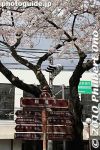
Sakura-dori road in Fuchu.
|
|
|
|
|
|
|
|
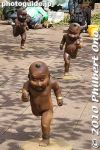
Sculpture in a park in Fuchu, Tokyo.
|
|
|
|
|
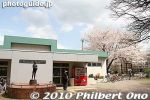
Fuchu pool
|
|
|
|
|
|
|
|
|
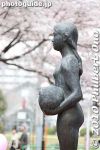
Sculpture in front of Fuchu Pool in Tokyo.
|
|
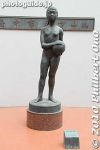
Sculpture in front of Fuchu Pool in Tokyo.
|
|
|
|
|
|
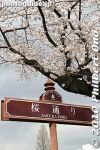
Sakura-dori road with cherry blossoms.
|
|
|

From Kashiwabara-juku, heading toward Samegai-juku.
|
|
|
|

Stone marker between Azusa and Kashiwabara-juku.
|
|
|

Kawauchi stone monument
|
|

Nakasendo stone marker. Go left to enter the old Nakasendo Road.
|
|

Nakasendo Road on left, entering Samegai-juku. On the right is Route 21 going to Maibara Station.
|
|

Nakasendo Road going to Samegai-juku.
|
|

Hachiman Shrine
|
|

Site of Ichirizuka milestone on left.
|
|

Ichirizuka milestone 一里塚
|
|
|

Samegai-juku is the sixty-first station or post town (shukuba) of the sixty-nine stations on the Nakasendo Road. It is the second Nakasendo station in Shiga (following Kashiwabara-juku), MAP
|
|
|
|

Samegai-juku stone monument
|
|

Samegai-juku and Nakasendo Road 醒井宿
|
|
|

Kamo Shrine is one of the first things that catches your eye as you enter Samegai. It's shrine on a steep slope. 加茂神社
|
|
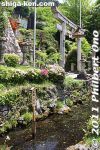
In front of Kamo Shrine is crystal clear water from a natural spring called Isame no Shimizu. This is the source of Samegai's famous Jizogawa River and one of Japan's 100 Famous Springs of the Heisei Period.
|
|

Samegai is famous for its Three Spring Waters and Four Rocks.
|
|

This is one of Samegai's famous Three Spring Waters. This one, in front of Kamo Shrine, is called Isame-no-Kiyomizu. 居醒の清水
|
|

Isame no Shimizu is the natural spring which is the source of Jizogawa River. The name "Samegai" also comes from this spring. 居醒の清水
|
|

About Isame no Shimizu and Yamato Takeru.
|
|
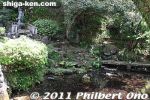
Next to Isame no Shimizu is a statue of Yamato Takeru.
|
|
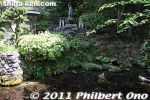
Isame-no-Kiyomizu spring was supposedly where famed warrior Yamato Takeru bathed to heal his wounds after battling an evil boar on Mt. Ibuki.
|
|
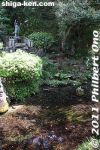
Yamato Takeru was a legendary prince and warrior who traveled a lot and defeated his enemies. However, he met his demise at Mt. Ibuki when he battled an evil god disguised as a white boar.
|
|
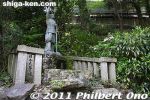
Statue of Yamato Takeru at Samegai's water spring. He defeated the boar, but not before the boar showered him with poisonous rain. He went to Isame no Shimizu whose waters healed him. Then he went on to Ise, but died soon afterward. 日本武尊の�
|
|
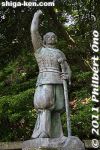
Statue of Yamato Takeru in Samegai-juku's water spring. It is not certain that this was the spring which Yamato Takeru used. Another theory says that he used Tamakurabe Clear Spring in Sekigahara, Gifu.
|
|
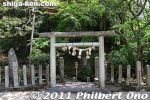
Torii gate to Isame no Shimizu spring waters.
|
|
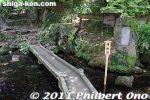
Rock where Yamato Takeru sat.
|
|
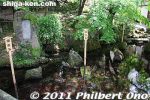
Three of Samegai's famous rocks are here, indicated by these wooden signs. 鞍懸石
|
|
|
|
|
|
|

Jizo-do temple houses a Jizo statue. Originally built by the Ogaki Castle lord Ishikawa Hyuga 石川日向守 in the Edo Period after he recovered from illness. The temple holds the Jizo-bon festival in Aug. 地蔵堂
|
|
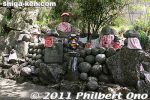
Jizo statues in Samegai. In 817, the priest Saicho carved a Jizo statue in Samegai and prayed for rain during a drought. It then rained heavily for three days. The Jizo was originally placed in the river to prsy for the souls of the fish.
|
|

Crystal-clear Jizogawa River 地蔵川
|
|
|
|

Jizogawa River was also noted for a freshwater fish called hariyo or stickleback. However, researchers have found that the hariyo seems to have become extinct here by May 2010.
|
|

Samegai Wooden Sculpture Museum, open only on weekends and national holidays. Closed in winter. 醒井木彫美術館
|
|

Site of Honjin lodge. 本陣跡
|
|

Samegai Museum in a former toiya-ba. 米原市醒井宿資料館 醒井宿問屋場(旧川口家住宅)
|
|
|

Inside the former toiya-ba.
|
|

Fire hose
|
|

Jizogawa River was also noted for a freshwater fish called hariyo or stickleback. However, researchers have found that the hariyo seems to have become extinct here by May 2010.
|
|

Apparently someone released a similar species called itoyo into the river and they crossbred. Researchers found the hybrid fish, but no pure-breed hariyo. This has come as a shock to the locals. Hariyo is on Japan's endangered list.
|
|

Underwater baikamo flowers Jizogawa River, Samegai, Shiga Pref. 梅花藻、バイカモ MAP
|
|

Underwater baikamo flowers Jizogawa River, Samegai, Shiga Pref. Bloom in summer, only in very clean water. 梅花藻、バイカモ
|
|

Samegai-juku and Nakasendo Road. The main part of Samegai-juku is near JR Samegai Station on the JR Tokaido Line. Short walk. 醒井宿
|
|
|

Emperor Meiji rested here.
|
|

Monument indicating that Emperor Meiji rested here.
|
|

Samegai Kominkan Community Center
|
|
|
|
|
|
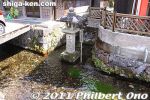
The second of Samegai's famous Three Spring Waters. This one is called Juo-sui. 十王水
|
|
|
|
|

Samegai Museum in a former post office designed by William Merrell Vories, Samegai, Shiga Pref. 旧醒井郵便局局舎 MAP
|
|
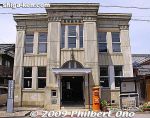
Samegai Museum in a former post office designed by William Merrell Vories, Samegai, Shiga Pref. 旧醒井郵便局局舎 MAP
|
|

Inside post office designed by William Merrell Vories.
|
|

Natural spring called Saigyo-sui. 西行水
|
|

Natural spring called Saigyo-sui. 西行水
|
|

The third of Samegai's famous Three Spring Waters. This one is called Saigyo-sui, named after the famous poet. 西行水
|
|

Saigyo-sui must be clean enough to drink.
|
|
|
|

Stone marker pointing to Bamba-juku, the next post town.
|
|

Road marker showing the way.
|
|

Tokaido Line train near Samegai.
|
|
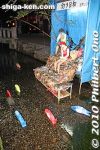
On Aug. 23 and 24, Samegai's Jizo-do temple holds the annual Jizo-bon festival at night. The Nakasendo Road has food stalls and displays of paper mache figures. 地蔵盆
|
|
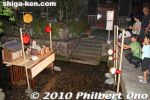
Jizo-bon is held along the Nakasendo road with various displays of paper mache figures made by local school children.
|
|
|
|
|
|

Jizo-bon in Samegai, Maibara.
|
|
|
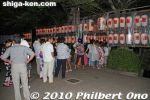
People line up at Jizo-do temple to pray to Jizo.
|
|
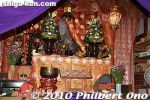
Jizo altar at Jizo-do temple in Samegai, Maibara.
|
|
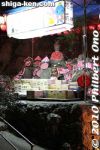
Jizo statues during Jizo-bon.
|
|
|
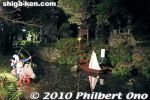
Figures at Isame-no-Kiyomizu spring during Jizo-bon festival.
|
|
|
|
|
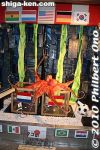
Fortune-telling octopus.
|
|
|

Some displays move.
|
|
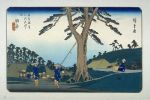
Hiroshige's print of Samegai-juku in his Kisokaido series.
|
|

Samegai Station, on JR Tokaido Line 醒ケ井駅
|
|

Mizunoeki rest house next to Samegai Station
|
|

Exhibition space in Mizunoeki arcade 2nd floor
|
|
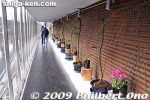
Exhibition space in Mizunoeki
|
|
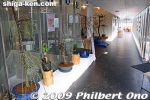
Exhibition in Mizunoeki
|
|
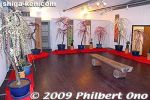
Exhibition in Mizunoeki
|
|

Chirimen Kaido Road is a Tango chirimen manufacturing area in Kaya. Originally a castle town with Yasurajo Castle.Since it was a castle town (during the Sengoku Warring States Period), a few streets have sharp, narrow turns or corners to defend against any invading enemies. Some of the traditional homes were built in the 19th century or 1920s-30s. Part of the district escaped damage from the 1927 Tango earthquake.
|
|
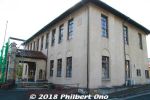
Former Kaya Town Hall (旧加悦町役場庁舎) that was built in the 1930s.
|
|
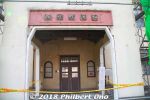
Entrance to former Kaya Town Hall (旧加悦町役場庁舎) that was built in the 1930s. Currently closed.
|
|
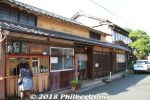
One house had a small chirimen factory we could view through a window.
|
|
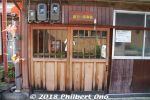
One house had a small chirimen factory we could view through a window.
|
|
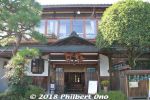
There used to be four ryokan here, but this Izutsuya ryokan 井筒屋 is the only ryokan remaining in Chirimen Kaido.
|
|

Kimono displayed in Izutsuya ryokan.
|
|
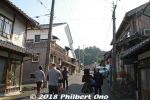
Chirimen Kaido Road has a walking route to see the traditional buildings still remaining. That's a sake cellar on the left.
|
|
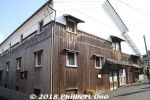
Sake cellar.
|
|
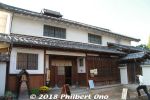
One home on the Chirimen Kaido Road the public can enter is the Former Bito Family Merchant's House (Kyu-Bitoke 旧尾藤家). The Bito family was a raw silk and chirimen wholesaler since the Edo Period. Very prominent and rich local family who also became active in local government and business during the Meiji Period.
http://www.yosano.or.jp/chirimen-kaido/?page_id=162
|
|
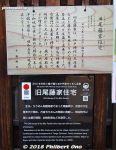
About the Former Bito Family Merchant's House (Kyu-Bitoke 旧尾藤家).
|
|

Inside the Former Bito Family Merchant's House (Kyu-Bitoke 旧尾藤家).
|
|
|
|
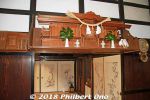
Houehold shrine inside Former Bito Family Merchant's House (Kyu-Bitoke 旧尾藤家).
|
|
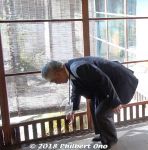
Before air conditioners, they had these sliding slats for ventilation in summer.
|
|
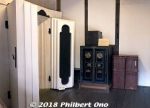
Kura storehouse and vault.
|
|
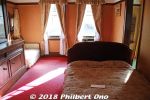
Western-style (Spanish) 2nd floor bedroom.
|
|
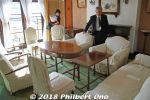
Western-style (Spanish) 2nd floor living room.
|
|

The Japanese-style first floor used very expensive materials. These thin wood pillars are shochikubai (matsu pine, bamboo, and ume plum tree).Former Bito family home, Yosano, Kyoto Prefecture.
|
|
|
|
|
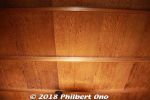
Ceiling wood is very rare, made of yaku-sugi cedar wood (屋久杉). Yaku-sugi is hundreds of years old, native to Yakushima island in Kagoshima Prefecture, and now illegal to cut down.
|
|
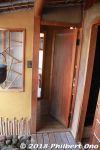
To Bathroom.
|
|

Bathroom sink
|
|
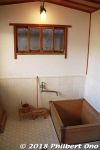
Bathroom
|
|

Inner courtyard
|
|

Palanquin
|
|
|
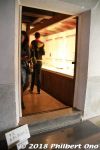
Exhibits in the kura storehouse.
|
|

Exhibits in the kura storehouse.
|
|
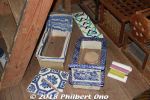
Old porcelain toilets.
|
|
|
|
|
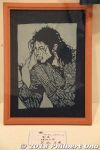
Michael Jackson
|
|

The house was originally a farmhouse built and expanded during 1863 to 1930. Toward the left on the second floor is the Western-style (Spanish) part of the house built in 1928.
|
|
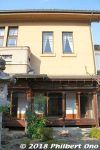
The first floor was Japanese style, while the second floor was Western-style (Spanish).Former Bito family home, Yosano, Kyoto Prefecture.
|
|
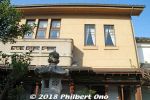
The first floor was Japanese style, while the second floor was Western-style (Spanish).
|
|
|
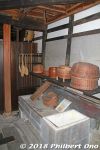
Kitchen
|
|
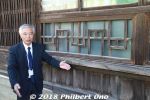
After the Bito Home, we continued our walking tour of Chirimen Kaido Road. Our guide, Aoki Jun'ichi, from Yosano Tourist Association, showed this exterior lattice design featuring the kanji character for "Tan" (from "Tango" 丹後) which is similar (by no coincidence in this case) to the kanji character for "yen" (円).
|
|
| 1437 files on 6 page(s) |
1 |
 |
 |
 |
|